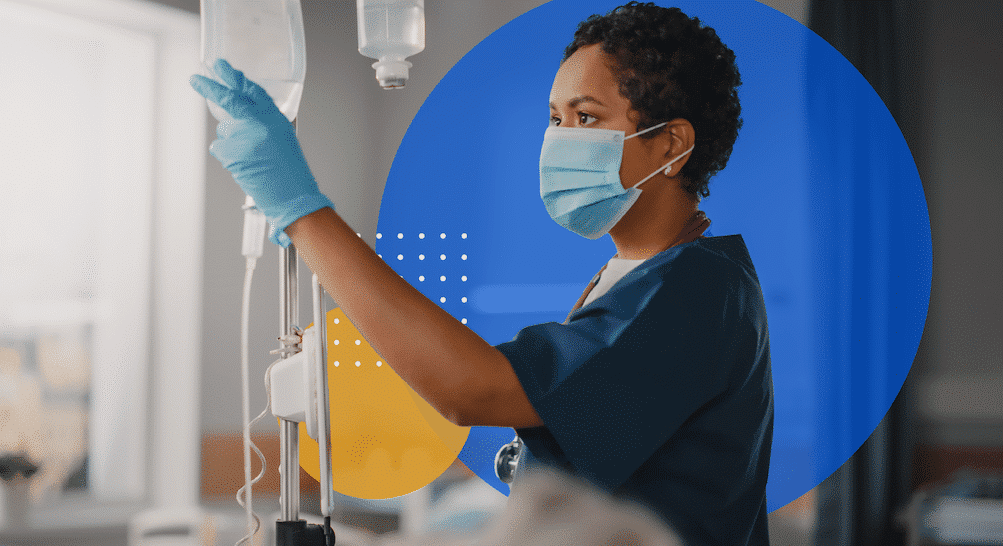Blog
Helping Clients Overcome Their Fear of Sharing Health Data for Telehealth

We are pleased to introduce today’s guest blogger Jeff Wise. Jeff is a health care professional who specializes in senior care. If you are looking for premium in-home care for your loved one, please visit Miami Home Care Services’ website.
Telehealth originated when clients were given the ability to access primary care over the telephone. However, in recent years advancements in technology have allowed progressive healthcare providers to offer a variety of services using different kinds of telecommunications channels.
Thus, the definition of telehealth has expanded to using all sorts of telecommunications technology to provide clients with access to a variety of medical and care providers. For example, clients are no longer restricted to calling the doctor on a landline, they can enjoy a one-on-one consultation via a live video chat.
According to the Hospitals & Health Networks (H&HN) online journal, effectively using telehealth has the power to transform the healthcare industry by giving clients better access to healthcare and saving healthcare companies billions of dollars.
Clients will no longer have to leave their own residence, office or nursing facility to speak with a doctor. Removing the issue of travel time, doctors and nurses are able to schedule and care for more clients.
Current Issues with Expanding Telehealth
These statistics from H&HN help frame the current state of using technology to access medical providers:
- A survey from American Well found that 64 percent of respondents would be willing to see a doctor via online video.
- In addition, 76 percent of clients said that they valued access to providers over seeing them in person.
- Expanding telehealth services could save American healthcare companies about $6 billion annually.
How to Get Clients to Share Information with Telehealth Providers
Many of the barriers to expanding telehealth are not technological. Resistance comes in the form of concerns over how to incorporate the new technology into typical operations of both acute and post-acute care.
In addition to developing a telehealth strategy, and often business line, medical providers today are already burdened by concerns over compliance with privacy rules and security. They also need to address client concerns over these matters.
Clients need to be assured that their private information is just as secure if they divulge it over the phone or an internet video link as it would be if they offer it in person. Otherwise, they will either be reluctant to use the technology or at least, they may not be entirely honest about describing their symptoms and situations.
Addressing Concerns Over Client Privacy
The reality is that clients already overwhelmingly accept electronic transmission of their private health records.
Typically, clients and providers complete forms that are transcribed into digital information systems by clerks and data entry staff. During this process, staff do see private medical records and the unfortunate truth is that sometimes they can make documentation mistakes.
Telehealth eases these documentation concerns, especially with a tight integration into your clinical documentation software. In order to encourage clients to participate in telehealth, they should have an understanding of the benefits of telehealth and how their privacy remains protected.
Overall security in healthcare has always been a major topic of discussion. Hospitals and clinics already have become targets for cyber hackers and the devices used by telehealth could provide another target.
This is why it is imperative for providers to have proper security in place for their technology and be HIPAA compliant. In addition, they should not be shy about promoting the actions that they have taken to protect confidential client health data.
Teleheath Technology Is Already Here
Today’s e-visit programs can make medical providers more efficient. Nobody contends that video or phone visits will totally replace face-to-face care.
However, they can be useful in cases when clients want a quick consultation, particularly for already established clients who need to manage chronic healthcare needs, or to complement in-person visits.
Since almost every doctor and client already has access to the internet, the technology is already in place. It just needs wider acceptance and understanding of the benefits. Both clients and providers can gain access to these systems with nothing more than their computers and mobile phones.
Guest blogger Jeff Wise is a health care professional who specializes in senior care. If you are looking for premium in-home care for your loved one, visit Miami Home Care Services’ website today.


